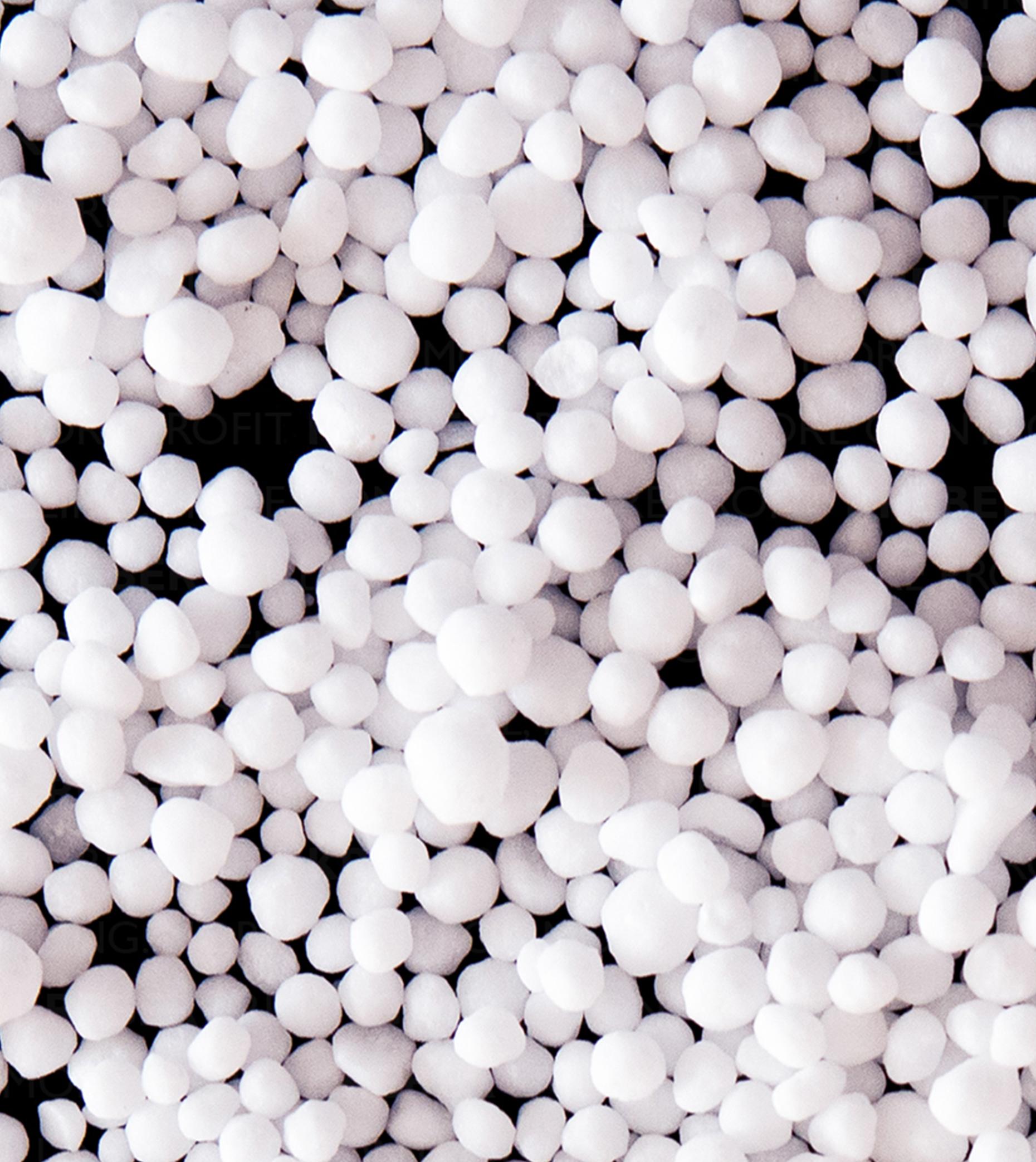Particles
Kreber designs processes and manufactures equipment that use particles or produce a particulate product.
Particles are used and produced in a wide range of processes in chemical, pharmaceutical, chemicals, food, and other industries.
Particles can be used in a separation process as adsorbents to adsorb unwanted compounds and purify a gas stream, or their surface can be used in a reaction process to catalyse selective reactions to synthesize pharmaceuticals.
A particulate fertilizer product allows the convenient distribution over land to let the crops grow while a particulate pharmaceutical product can be administered in the formulation of a tablet to treat a patient.

Particles
At Kreber we define particles as small, discrete units of matter. Depending on their use, particles vary significantly in composition, solid structure, size and shape.
Particle sizes range from nanoscale particles consisting of a few molecules or atoms to microparticles observable with a microscope, and larger particles visible to the naked eye. A particle size distribution (PSD) gives information on the collection of particle sizes in the product. The particle size distribution of fertilizer prills determines for instance how easy the product can be distributed over the land and how fast the product dissolves when coming into contact with water.
Particles usually are solids which have a crystal structure with a very specific arrangement of molecules or atoms in them. For instance, table salt, sugar and the fertilizer urea are such crystalline solid particles. Sometimes particles benefit from an amorphous structure, such as amorphous silica which can be employed in rubber, plastics, coatings, and paints to enhance properties such as reinforcement, viscosity control, and improved scratch resistance. Also, highly viscous liquid such as long chain polymers can form particles. For pharmaceutical particles the solid structure strongly impacts on particle product properties such as dissolution behaviour, bioavailability, and shelf life.
Specific compositions within the particle can be beneficial for the particle product application. Particles consisting of a mixture of fertilizers can have the optimal nitrogen and sulfur composition for specific crops. In the food, pharmaceutical and fine chemical industries high levels of purity are desired. For instance, impurities from side reactions during the synthesis of an active pharmaceutical ingredient could lead to unwanted additional biological activity of the administered drug if these impurities end up in the final particulate product.
The particle shape can be vital for the flow and storage properties of a product. A single crystal particle often has a very distinct shape with flat surfaces, such as the cubic crystal particles of industrially produced table salt.

